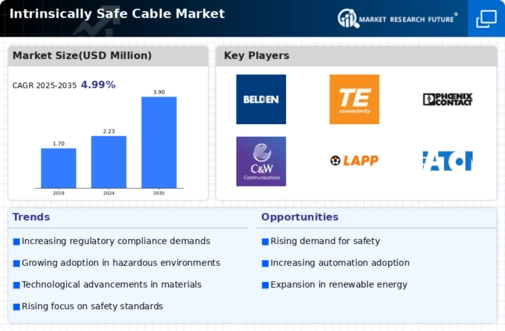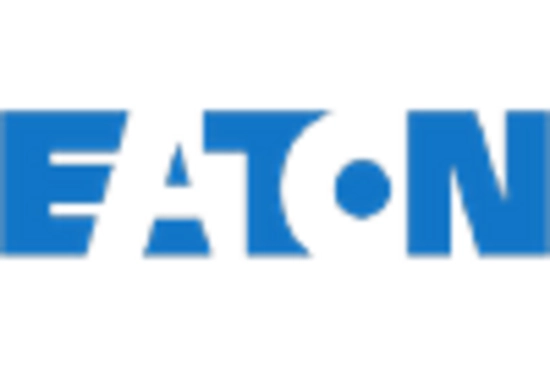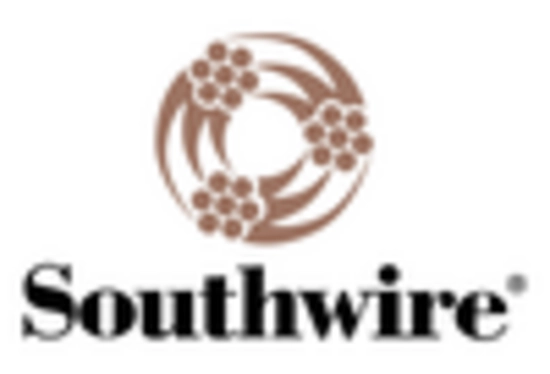The Intrinsically Safe Cable Market is characterized by a dynamic competitive landscape, driven by the increasing demand for safety in hazardous environments, particularly in sectors such as oil and gas, mining, and chemical processing. Key players like Prysmian Group (Italy), General Cable (US), and Eaton Corporation (US) are strategically positioned to leverage their technological expertise and extensive product portfolios. Prysmian Group (Italy) focuses on innovation and sustainability, emphasizing the development of advanced cable solutions that meet stringent safety standards. Meanwhile, General Cable (US) has been enhancing its operational capabilities through strategic partnerships and regional expansions, aiming to strengthen its market presence. Eaton Corporation (US) is also notable for its commitment to digital transformation, integrating smart technologies into its product offerings, which collectively shapes a competitive environment that prioritizes safety, efficiency, and technological advancement.
The market structure appears moderately fragmented, with several key players vying for market share while also collaborating on various initiatives. Companies are increasingly localizing manufacturing to reduce lead times and optimize supply chains, which is crucial in a market where timely delivery can significantly impact operational safety. This collective influence of major players fosters a competitive atmosphere where innovation and responsiveness to market needs are paramount.
In August 2025, Prysmian Group (Italy) announced the launch of a new line of intrinsically safe cables designed specifically for the oil and gas sector. This strategic move not only enhances their product portfolio but also positions them as a leader in providing tailored solutions for high-risk environments. The introduction of these cables is expected to meet the growing regulatory demands for safety and reliability, thereby reinforcing Prysmian's competitive edge in the market.
In September 2025, Eaton Corporation (US) unveiled a partnership with a leading technology firm to develop AI-driven monitoring systems for their intrinsically safe cables. This collaboration signifies a pivotal shift towards integrating advanced technologies into traditional cable solutions, potentially revolutionizing how safety is managed in hazardous environments. The strategic importance of this partnership lies in its ability to enhance product functionality and provide real-time data analytics, which could lead to improved operational efficiencies for end-users.
In July 2025, General Cable (US) expanded its manufacturing capabilities in North America by investing in a new facility dedicated to producing intrinsically safe cables. This expansion not only reflects General Cable's commitment to meeting increasing demand but also underscores the importance of regional production in ensuring supply chain reliability. The strategic significance of this investment is multifaceted, as it allows for greater responsiveness to local market needs while also enhancing the company's competitive positioning against global players.
As of October 2025, the competitive trends in the Intrinsically Safe Cable Market are increasingly defined by digitalization, sustainability, and the integration of AI technologies. Strategic alliances are becoming more prevalent, as companies recognize the need to collaborate in order to innovate and enhance their offerings. Looking ahead, it is likely that competitive differentiation will evolve from traditional price-based competition to a focus on innovation, technological advancements, and the reliability of supply chains. This shift may redefine how companies position themselves in the market, emphasizing the importance of safety and efficiency in their product offerings.


















Leave a Comment